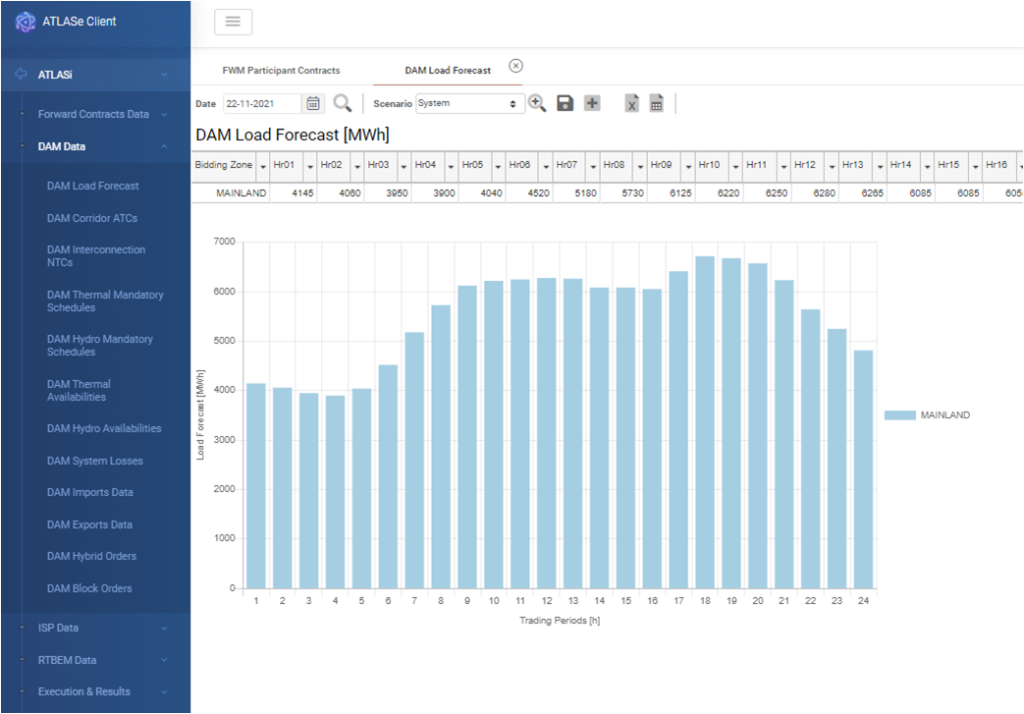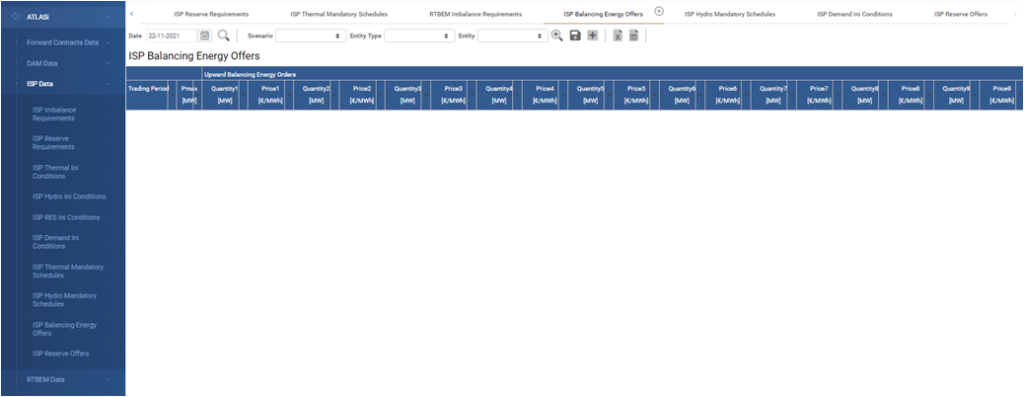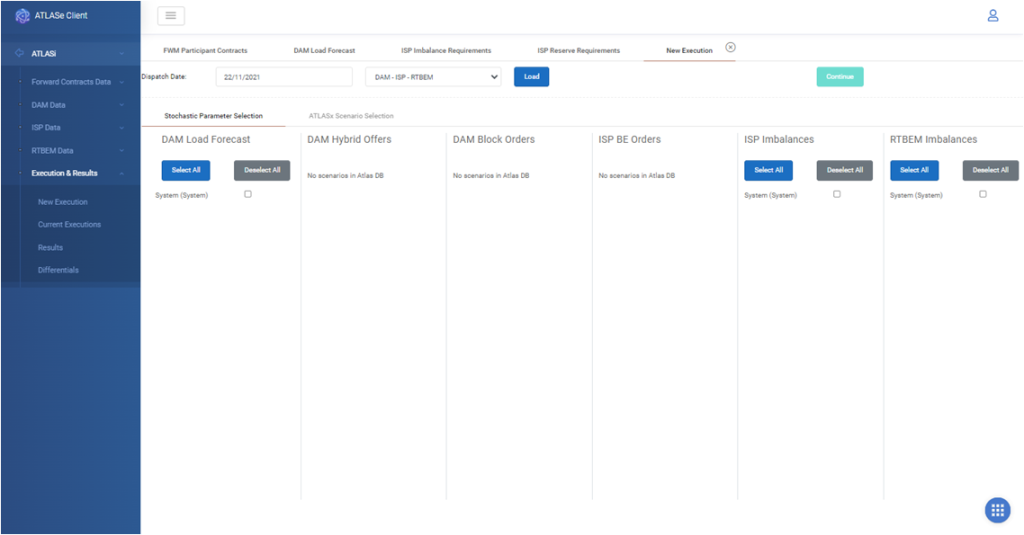ATLASi
- Home
- ATLASi
ATLASi can be used for short-term wholesale electricity market simulation. ATLASi module is already incorporated in the ATLAS ETRM platform / ATLASe module.
ATLASi incorporates solvers for the simulation / solution of the Day-Ahead Market (DAM), the Integrated Scheduling Process (ISP) and the Real-Time Balancing Energy Market (RTBEM).
The Day-Ahead Market simulation module follows the technical specifications of solver EUPHEMIA, which constitutes the market coupling solver of all European markets under the Target Model provisions. The objective of the Day-Ahead Market problem is to maximize the social welfare, i.e. the total market value of the Day-Ahead auction. The social welfare is computed as the sum of the consumer surplus, the producer surplus and the congestion rent. The clearing rules of all tradable products (simple hourly orders, simple and profile block orders, flexible hourly orders, exclusive group of block orders) are taken into account in the problem solution.


The Integrated Scheduling Process (ISP) can be executed by the user to attain the following results:
- Preliminary (indicative) Dispatch Schedules for all Balancing Service Providers (BSPs). The preliminary schedules refer to the whole scheduling horizon of the given ISP and shall be further updated by the subsequent ISP executions and eventually by the Real-Time Balancing Energy Market (RTBEM) which shall issue the actual Dispatch Instructions to the BSPs.
- Binding (a) commitment decisions of the BSPs (e.g. Generating Units), (b) AGC status of the BSPs providing aFRR, and (c) Reserve Capacity awards of the BSPs.
The Balancing Service products that are included in the ISP are the following:
- Upward and Downward Balancing Energy (BE).
- Different types of Reserve Capacity (RC):
- Upward and Downward Frequency Containment Reserve (FCR),
- Upward and Downward Frequency Restoration Reserve with automatic activation (aFRR), and
- Upward and Downward Frequency Restoration Reserve with manual activation (mFRR)
The RTBEM inherits the commitment decisions taken in the ISP and does not re-evaluate these commitment decisions, nor does it make any additional optimal BSP commitment. Thus, it is not a unit commitment application, but rather an economic dispatch process, which respects and follows the ISP commitment decisions, unless a relevant resource suffers a forced outage in which case it becomes unavailable in the RTBEM, or the load or renewable production and system conditions change considerably during the real-time process. In such cases, a new run of the ISP (ISP on-demand) shall provide the necessary commitment decisions to follow in real time.
RTBEM produces the real-time activations of upward / downward Balancing Energy, the respective Balancing Energy prices, the revenues of the Balancing Service Providers, and the Imbalance Prices.
ATLASx can solve several scenarios of DAM, ISP and RTBEM executions with stochastic data and produce and compare the simulation results for all scenarios.
The user-interface guides the user to select the scenarios to be used for each single stochastic parameter, it parallelizes simulation tasks and proceeds with their solution, in order to provide an easy way to serve them to the user with comparisons and differentials.

